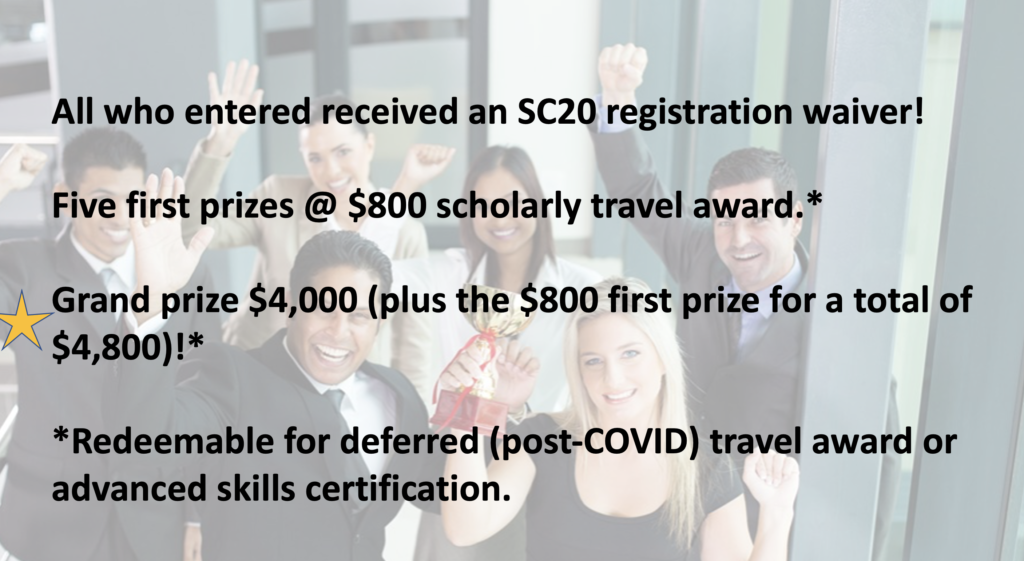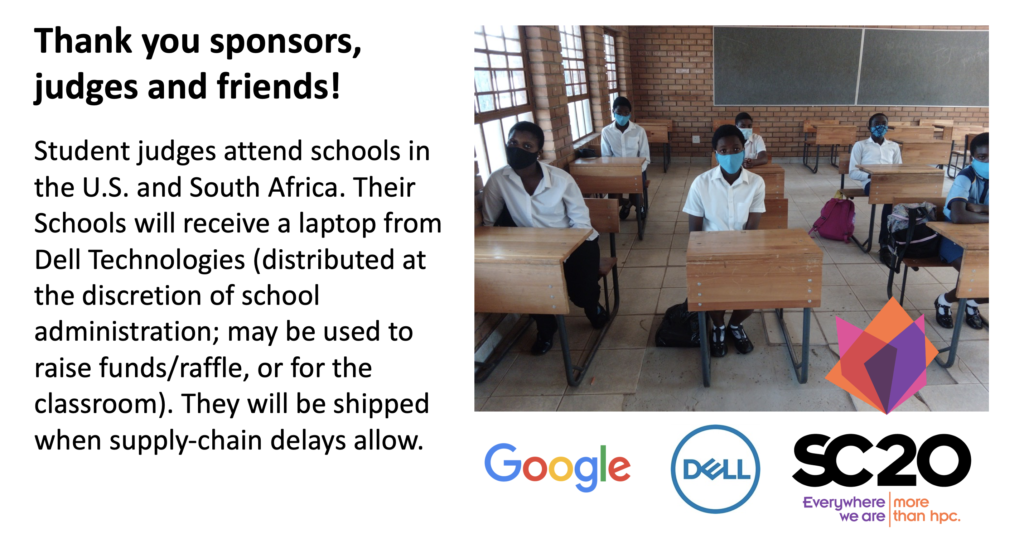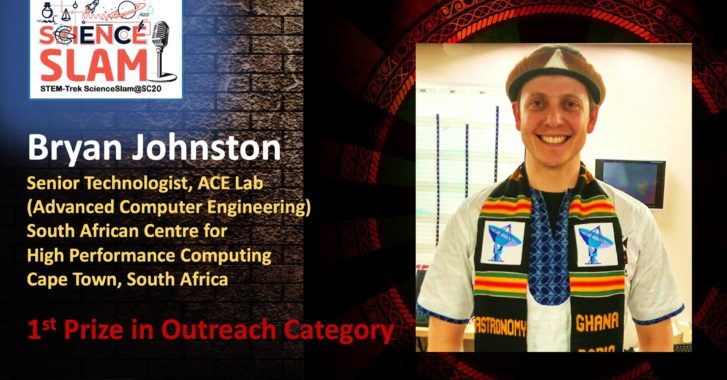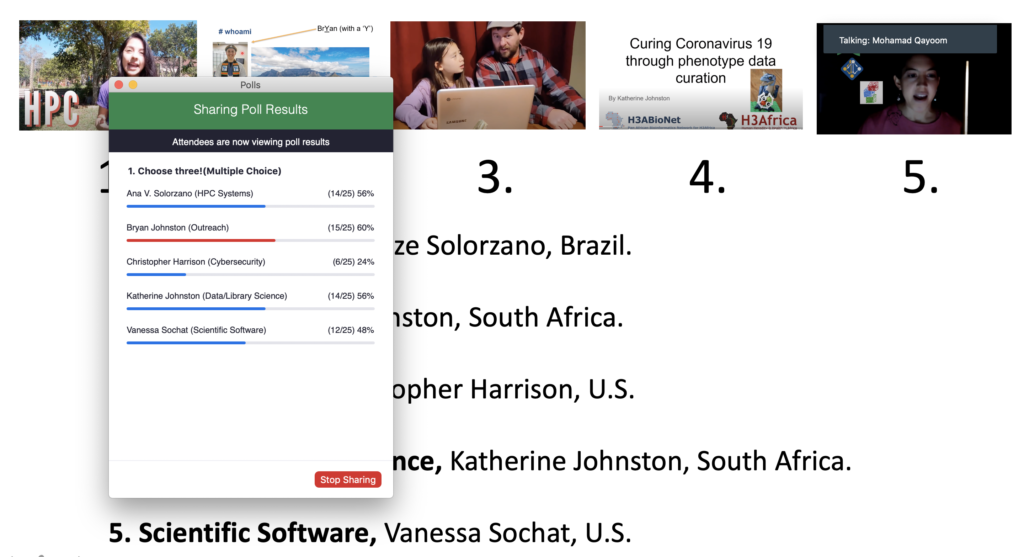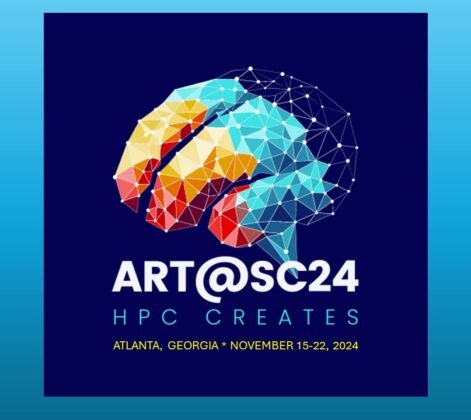Congratulations, Bryan Johnston (Centre for HPC, South Africa). Bryan won first place in the Outreach category, then prevailed in the final run-off against four others.
The ScienceSlam@SC20 challenge was to communicate complex scientific content in terms that could be understood by a 13-year-old. Student judges for the first round ranged in age from 10 to 20 years; all were from rural communities in the U.S. and South Africa. For the final contest, the audience was a mixture of contestants, families, friends and others from the HPC community.
Bryan’s video described the history and evolution of a training initiative that prepares the HPC workforce in more than a dozen countries throughout southern Africa. While many of us reverted to an online format in 2020, his team made that move well before the pandemic when they realized that open-source training and VMs in the cloud are far more efficient than traveling to train together on real hardware. While each site hosts its own HPC, newcomers are trained in an asynchronous, online environment with periodic in-person virtual meetings of the widely-distributed cohort. This way, they are bringing more into the pipeline, which will help manage the churn that we all deal with.
Bryan described the demands of sheltering in place with small children and working from home during the COVID-19 crisis. But he and his wife, Katherine, who won first place in the Data and Library Science category (below), make the most of it! Watch Bryan’s video here.

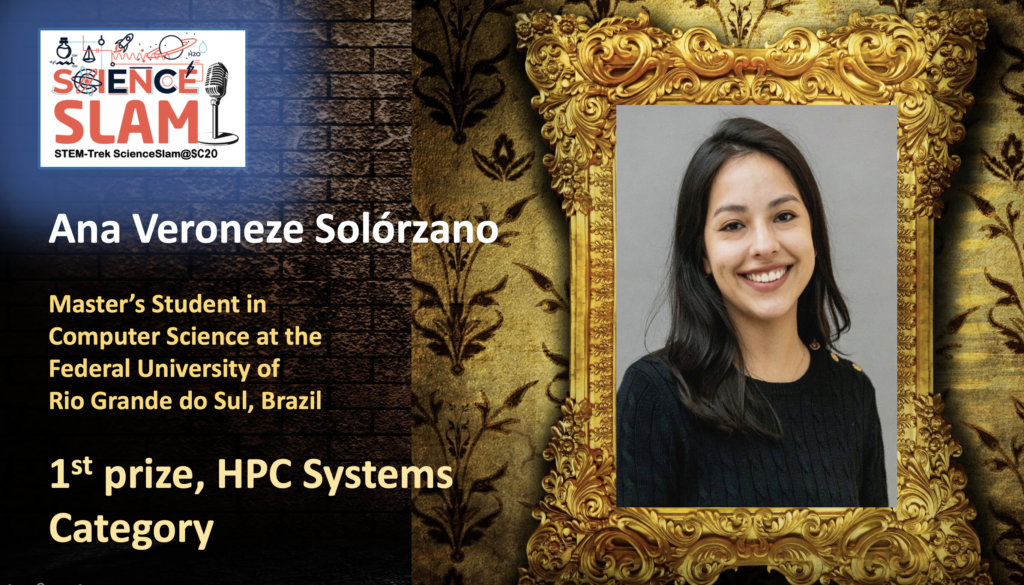
First prize in the HPC Systems category went to Ana Veroneze Solórzano. The student judges ranked Ana’s video first; they seemed to appreciate how she incorporated her surroundings, friends, and a dog. She also used chickens and an egg production scenario to demonstrate the concept of parallelization; a strategy that was especially appreciated by student judges who live on or near farms. Watch her video here.
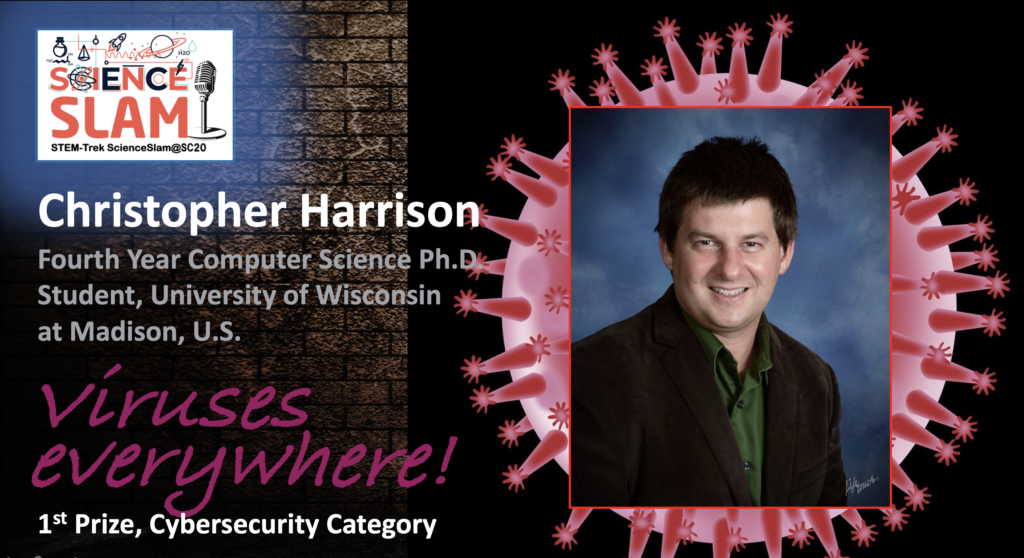
Christopher Harrison (U-Wisconsin at Madison; Biostat) won first place in the Cybersecurity category in a video where he explains to his young daughter how computer viruses resemble bugs that we catch, such as COVID-19. The student judges appreciated Christopher’s strategies and ranked his video in third place (in a larger first-round cohort). Watch his video here.
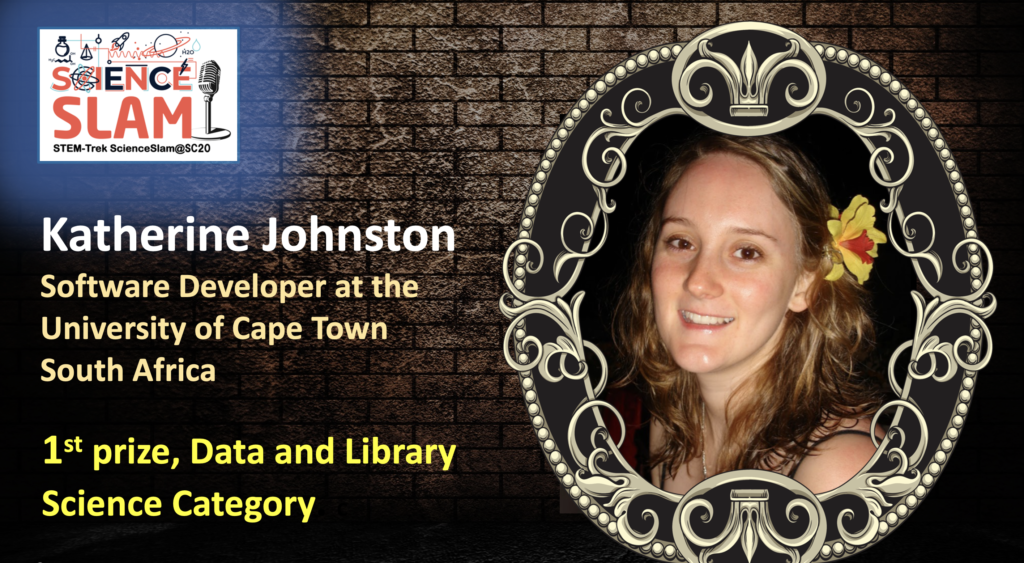
Curing Coronavirus with data phenotype curation was the theme of Katherine Johnston’s (University of Cape Town, South Africa) video which won first place in the Data/Library Science category. Katherine used Legos to demonstrate genetic diversity; they’re beloved by children and parents alike (as long as you don’t step on the pieces!). Watch Katherine’s video here.
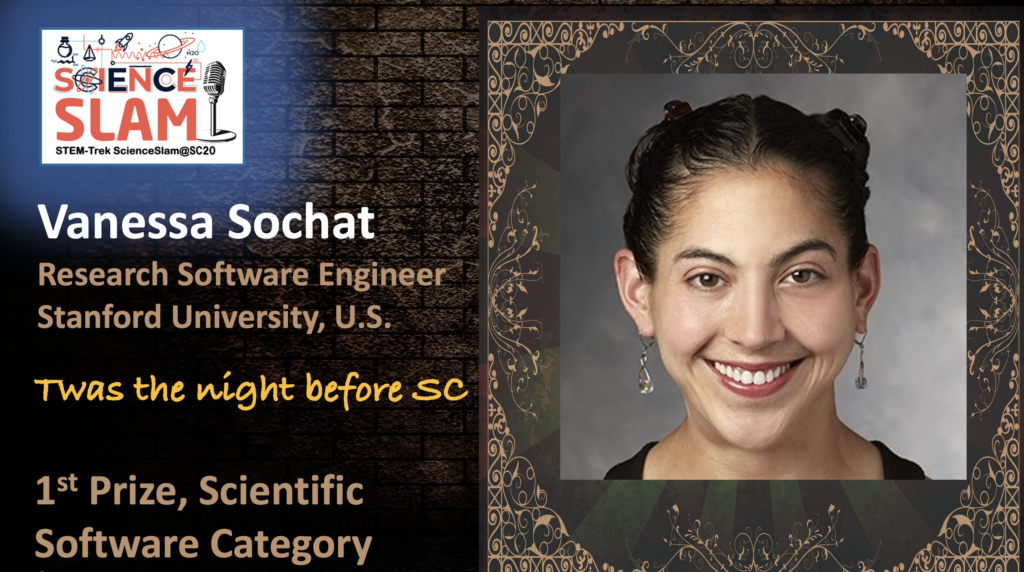
“Twas the Night before SC” was the theme for a slam poetry submission by Vanessa Sochat (Stanford University) which won first place in the Scientific Software category. Through poetry and with the help of stuffed animal friends, Vanessa described many of the tools used by software engineers, and the benefits of open-source resources, communities and more. Watch her video here.
Tough decision; but there can only be one grand prize winner!
In an in-person Science Slam event that is popular in Germany, the audience votes with their applause and/or by holding cards up in the air with a number (1-5). In the Zoom virtual space, we conducted a poll. The run-off audience, which ranged in age from two to 60-something, narrowly favored Bryan Johnston, with Ana Veroneze Solórzano and Katherine Johnston tying at a close second.
Had there been a tie for first place, student first-round judging votes would have been factored in with the final round (which favored Ana, then Bryan and Christopher).
The ultimate communication challenge: Explaining science and technology to 13-year-olds!
First-round student judges reacted well to videos that featured animals and children; animations, action, toys and people having fun. Bryan’s moved quickly with lots of interesting photographs and references to popular culture. Vanessa’s stuffed animals, Katherine’s Legos, and Ana’s chickens were enjoyed by young and old alike. They liked that Christopher featured his daughter.
Feedback for those who submitted videos that didn’t make it to the final round
Since the target audience age was 13, it’s wise to remember that children do not warm to traditional presentations that were developed with college-age or older scholars in mind. Jargon is tolerated, but only if it’s explained in a way they can grasp. Otherwise, they check out. Their online world is fast-paced and colorful. ScienceSlam submissions should keep this in mind if they hope to advance to the final round next time.
